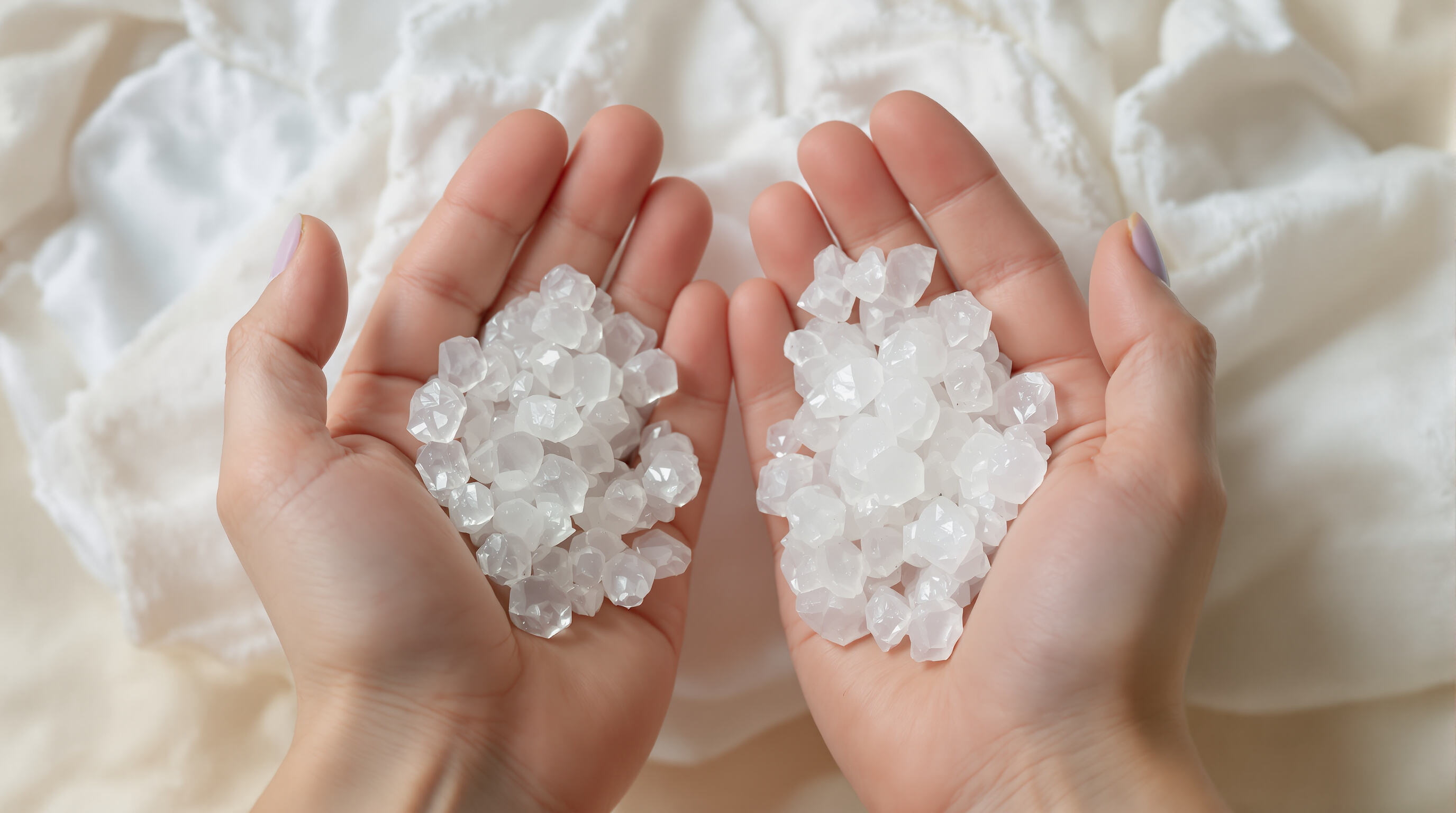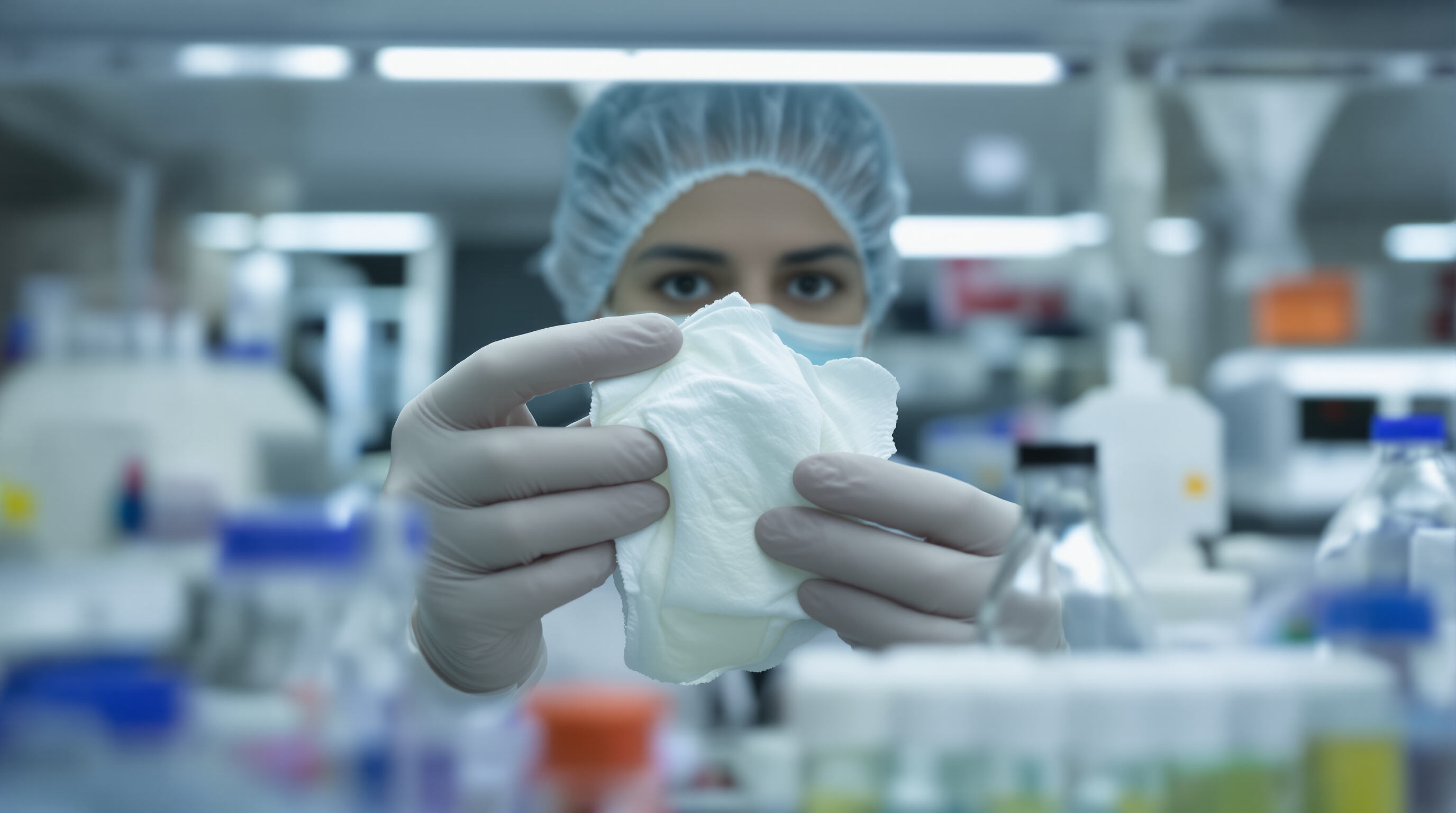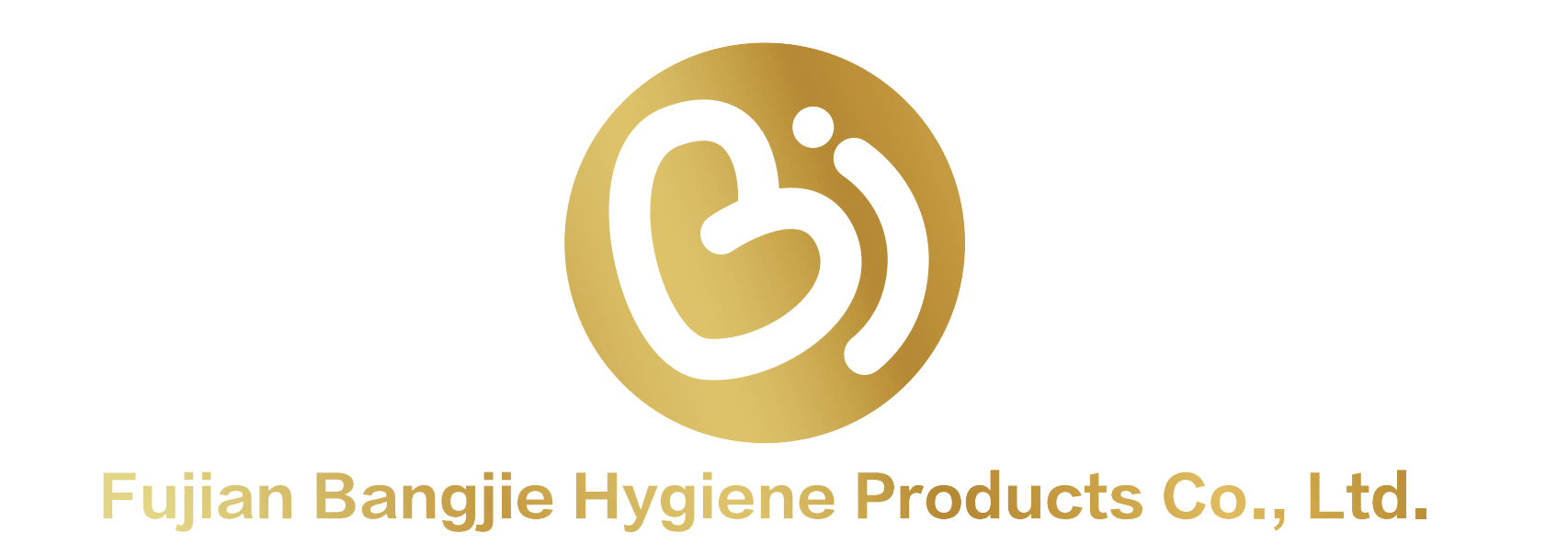GİC ölkələrinə idxal edilən uşaq pəmbələrində SAP məzmununun həddi üzrə qayda ilə bağlı yeniliklər
Bəbək pərənələrində SAP və onun tənzimləyici əhəmiyyəti

Bu günün pətliklərinin arxasında Super Sorbent Polimerlər və ya qısaca SAP adlanan şey durur. Bu kiçik məcəzilik tədqiqatlar nəticəsində 300 dəfə çəkisindən artıq mayeni sorub götürə bilir. 2020-ci ildə nəşr olunan Polimerlər Jurnalında dərc olunmuşdur. Onları nə qədər effektiv edir? Əsasən natrium poliakrilat kristallarından ibarətdir ki, mayelərlə təmasda olduqda jelləşir. Bu o deməkdir ki, uşaqların dərisi daha köhnə sellüloz əsaslı konstruksiyalara nisbətən çox daha quru qalır. Tədqiqatlar bu nəmliyə məruz qalma dərəcəsinin azalmasının dəri problemlərini təxminən 72% azaltdığını göstərir ki, bu da valideynlərin qorxduğu rahatsız pətlik səbəbindən qorunmaq üçün uzun addımlar atır.
GCC və Beynəlxalq SAP Standartları Arasında Əsas Fərqlər
GCC ölkələri bir çox beynəlxalq meyarlara nisbətən SAP tərkibinə daha sərt hüdudlar qoyur:
| Region | Maksimum SAP % | Test tezliyi |
|---|---|---|
| GCC | 30% | Partiya səviyyəsi |
| Aİ | 35% | İllik nümunələr |
| ABŞ | 37% | İstehsalçının öz hesabatı |
SUA-da 2023-cü ildə 12 milyon pətliyi SAP səviyyəsinin 30% həddini aşması səbəbindən (32,1% ölçülmüşdür) geri çağırmaq sərtləşdirilmiş tətbiqi göstərir. İdxalçılar ən geniş ISO 19698 sorbtsiya meyarlarından üstün olan Körfəz Texniki Tənzimləməsi 1234-ün miqrasiya test protokollarına əməl etməlidirlər.
GCC Bazarlarında SAP Uyğunluğuna Qoyulan Tənzimləmə Hazırlığı
2023-cü ildə uyğunsuz pətlik partiyalarının 84%-i SAP sertifikasiyasının zəif olması ilə əlaqələndirilmişdir (Körfəz Standartları Təşkilatı, 2024). GCC tələblərinə cavab vermək üçün istehsalçıların aşağıdakılara əmin olmaları lazımdır:
- Polimer təmizliyinin üçüncü tərəf tərəfindən təsdiq edilməsi, ağır metallar 0,002% aşağı səviyyədə
- Gözlənilən Körfəz iqlimi şəraitinə uyğun 45°C temperaturda və 85% nəmlikdə sabitlik testi
- SAP-nin fluff-pulp nisbətini əks etdirən ərəb dilində sənədlər
İrəli gedən şirkətlər artıq GSO-nun 95% material bərabərlik tələbini yerinə yetirmək üçün süni intellektli SAP dispersiya skanerlərindən istifadə edirlər ki, bu da hər bir hadisə üçün orta hesabla 740 min ABŞ dolları məbləğində xərcləri qənaət etməyə kömək edir (Ponemon İnstitutu, 2023).
Bəbək pətisinin tərkibinə dair İKT Tənzimləyici Çərçivəsi
GSO Standartları və Superabsorbent Polimerlər üzərində Tətbiqi
Bəbək pətislərində istifadə olunan superabsorbent polimerlərin (SAP) çəkisinin 15%-ni keçməməsini Bərqərar etmək Standartları Təşkilatı (GSO) tələb edir. Bu hədd dəri üçün təhlükəsizliyi və məhsuldarlığı tarazlaşdırır və 12 saat ərzində effektiv sorulma təmin edir. Bazar üçün qeydiyyatdan keçməzdən əvvəl ISO 17025 akkreditli laboratoriyalar vasitəsilə təsdiqlənməsi tələb olunur.
İKT-ya Uyğunluq Qiymətləndirməsi Proqramlarına Son Dəyişikliklər
2024-cü ildən etibarən istehsalçılar Bəbək pətislərinin tərkibinə dair rüblük hesabatları İKT Məhsul Təhlükəsizliyi Portalı vasitəsilə təqdim etməlidirlər. Yeni qiymətləndirmə protokolları SAP təchizatçılarının Bəhrəyndə, Küveytdə, Oman, Qətərdə, Səudiyyə Ərəbistanında və BƏƏ-də izlənilməsinə diqqət yetirir. Sertifikatsız xammal partiyaları indi əlavə yoxlama prosedurları nəticəsində sərhəddə 98% rədd edilmə faizi ilə qarşılaşır.
Həll olunmamış Bəbək pətislərinin BƏƏ-də geri çağırılması: 2023-cü il
2023-cü ilin market nəzarət əməliyyatı nəticəsində idxal olunan pətliklərin 23%-də SAP səviyyəsinin 21,4%-ə çatdığını, beləliklə də 15% GSO həddini aşdığını müəyyən edildi. Hüquq-mühafizə orqanları 2,3 milyon ABŞ dolları məbləğində inzibati cərimələr tətbiq etdi və 12,7 milyon ədəd pətliyi məhv etdi. Bu, Gulf Technical Infrastructure Protection Act (GTIPA) qaydalarına ciddi riayət edildiyini nümayiş etdirir.
SAP Maksimum Həddləri, Yoxlama Üsulları və Sənaye Çətinlikləri

Birləşmiş Ərəb Əmirliklərində Təsdiqlənmiş Uşaq Pətliklərində Maksimum İcazə Verilən SAP Səviyyəsi
GSO 1943:2021 standartına əsasən, normal rütubət səviyyələrində ölçülən zaman uşaq pətlikləri çəkisinin ən çoxu 33%-ni təşkil edən SAP materialından istifadə edə bilər. Bu hədd pətləyin strukturunun saxlanmasına kömək edir və udma qabiliyyətinə malik polimerlərin məhsulun daxilində hərəkət etmə ehtimalını azaldır. Amma digər regionların tənzimləmələrinə baxdıqda məsələ maraqlı hala gəlir. Avropa İttifaqı 40% SAP tərkibinə icazə verir, şimali Amerika isə ümumiyyətlə 35% SAP tərkibinə əməl edir, lakin tez-tez dəri sağlamlığını saxlamaq üçün pH balanslaşdırıcı komponentlər əlavə edilir. Bu fərqlər şirkətlər üçün məhsulların hazırlanması zamanı Birləşmiş Ərəb Əmirlikləri ölkələri tələblərinə uyğun gəlməsi üçün real çətinliklər yaradır.
SAP təsdiqi üçün laboratoriya test prosedurları
GCC akkreditasiyalı laboratoriyalar üç fazalı təsdiq prosesinə əməl edir:
- Material Tərkibi Analizi (ISO 187:2022)
- 72 saatlıq udma qabiliyyəti testi (ES 800-6:2020)
- Dəri ilə təmas simulyasiyası sintetik tər yaradıcı məhlullar istifadə edərək
2023-cü ilin beynəlxalq laboratoriya araşdırması SAP-in təyinində əl ilə ekstraksiya və avtomatlaşdırılmış xromatoqrafik sistemlər arasında 22% fərqlilik aşkar etdi ki, bu da mövcud test metodlarının ardıcılığını pozur.
Sorbmə qabiliyyəti və təhlükəsizliyin tarazlanması: SAP tənzimləməsi ilə bağlı mübahisə
SAP üzrə daha sərt GCC standartları dermatoloji xəstəliklərin bildirilməsində 12% azalmaya səbəb olub (GCC Səhiyyə Metrikası Hesabatı, 2024). Bununla belə, istehsalçılar 33%-ə yaxın olan həddin gecə boyu sızma qoruyuculuğunu pozduğunu iddia edirlər. Yeni hibrid polimer texnologiyaları SAP həddini aşmadan 41% daha yüksək sorbmə qabiliyyəti təklif edir və hazırda tənzimləyici nəzarət altındadır, lakin təsdiqlənmə müddəti orta hesabla 18 ay çəkir ki, bu da yeniliklərin tətbiqini gecikdirir.
Yenilikçilik və müvafiqlik: SAP istifadəsi paradoksunun idarə edilməsi
2023-cü ildə Birləşmiş Ərəb Əmirlikləri məhz bu xüsusi karboksilləşdirilmiş sellüloz SAP qarışıqlarını ehtiva etdiyinə görə təxminən 6,2 milyon uşaq pətəyini raftan götürdü. Bu böyük çağırış regionda qurumların məhsul təhlükəsizliyi standartlarını necə ciddi qəbul etdiyini göstərir. İstehsalçılar da ciddi maliyyə problemləri ilə qarşı-qarşıya qalıblar. Keçən il Ponemon tərəfindən aparılan tədqiqata görə, yeni tələblərə uyğun gəlmək üçün formulaları düzəltmək hər məhsul xətti üçün təxminən 740 min ABŞ dollarına başa gəlir. Vəziyyət isə müvafiq qaydalara riayət etmə problemləri baxımından daha da pisləşir - regionda şirkətlərin təxminən səkkizdə beşi materialların təhlükəsizliyi barədə ölkələrin fərqli qaydaları səbəbindən gecikmiş vaxt planları ilə mübarizə aparır. 2025-ci ilin ortalarına qədər testləmə çərçivələri fərqlərini həll edə biləcək Gulf Cooperation Council (Gulf Əməkdaşlıq Şurası) texniki komitəsinin yaradılması barədə danışıqlar gedir. Əgər bu həqiqətən baş verərsə, bu, nəhayət şirkətlər üçün büdcə və qaydalara riayət etmədən kənar sərhədlər üzrə işləyən məhsullar hazırlamağı asanlaşdıra bilər.
Tez-tez verilən suallar
SAP nədir və onun beşik paltarı kontekstində rolu nədir?
SAP – Super Sorbent Polimerlər deməkdir, bu da mayelərin böyük miqdarını udma qabiliyyətinə malik materiallardır və bu, beşik paltarlarında dəri qurulu saxlayaraq onun eritemasını azaldır.
Niyə SAP-in tərkib normları regionlardan asılı olaraq fərqlənir?
Müxtəlif regionlar udma qabiliyyəti, təhlükəsizlik və ətraf mühit təsirini yerli şərait və tənzimləmələrə əsasən tarazlaşdırmaq üçün SAP tərkib normlarını müxtəlif şəkildə tətbiq edirlər.
Əgər paltarın SAP miqdarı İKT həddini aşarsa nə baş verər?
SAP həddini aşan paltarlar geri çağırıla, cərimələnə və bazar tərəfindən rədd edilə bilər. Məsələn, 2023-cü ildə Birləşmiş Ərəb Əmirliklərində 12 milyondan artıq uyğunsuz paltar geri çağırılıb.
İstehsalçılar necə fərqli regional SAP standartlarına uyğunlaşmağa nail ola bilərlər?
İstehsalçılar qəti testlər apararaq, üçüncü tərəf təsdiqlərindən istifadə edərək və hər bir regionun xüsusi sənədləşmə və keyfiyyət standartlarına riayət edərək uyğunlaşmağa nail olmalıdırlar.


